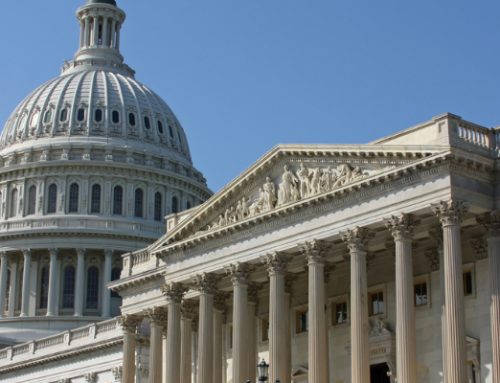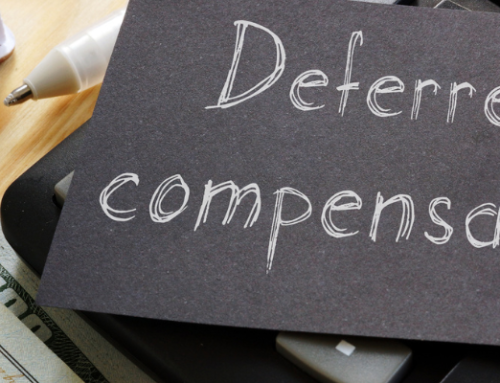By Edward T. Yoder, CPA, MSA
Big changes to tax laws related to corporations, clean energy, and healthcare are either here or on the horizon thanks to 2022’s Inflation Reduction Act. These 12 tax updates are likely to have a bigger or more immediate impact on most taxpayers than some of the dozens of other tax provisions in the legislation.
At the end of this article, we provide a list of all the tax incentives in the Inflation Reduction Act.
Corporate Alternative Minimum Tax
In recent years, countries have debated significant changes to international tax rules affecting multinational companies. As part of the Organization for Economic Co-Operation and Development, more than 130 countries have agreed to an outline for new tax rules, which includes a global minimum tax of 15 percent. The proposal would increase taxes on companies with earnings in low-tax jurisdictions.
In concert with other countries, the United States opted to impose a corporate alternative minimum tax based on 15 percent of a corporation’s financial statement income. This applies to C-Corporations with a three-year average annual financial statement income greater than $1 billion. An analysis from the Joint Committee on Taxation found that only 30 percent of Fortune 500 companies will be impacted by the new minimum tax.
Our Takeaway: Given the high threshold of $1 billion in book income, few corporate entities will really be impacted by this policy change. There are approximately 1.7 million C-Corporations in the U.S. If only 170 of them have $1 billion of book income, only .01% will be impacted by this change.
It will be interesting to see how financial statement reporting and book income will now drive taxable income under this alternative minimum tax structure.
Excise Tax on Repurchase of Corporate Stock
The new one percent excise tax is imposed on publicly traded corporations’ repurchased fair market value of stock reduced by stock issuances during the year. It will be based on the net of stock repurchased less stock issued. There will be exceptions for tax-free reorganizations, repurchases treated as dividends, and certain other transactions.
Extension of Limitation on Excess Business Losses of Non-corporate Taxpayers
This change extends the limitation on excess business losses on non-corporate taxpayers of Internal Revenue Section 461 by two years, from 2021 through 2028. For 2022, the threshold amount is $270,000 or $540,000 for married taxpayers filing a joint return. Business losses over those threshold amounts are disallowed and treated as net operating losses to be carryforward to future tax years.
Nonbusiness Energy Property Credit
This credit is extended through 2023 and was modified to a new credit rate of 30 percent. Additionally, the IRA replaced the credit’s lifetime limit of $500 with a $1,200 annual limit.
Residential Energy Efficient Property Credit
The residential energy efficient property credit covers qualified solar electric property, solar water heating property, fuel cell property, small wind energy property, geothermal heat pump property, and battery storage technology. Qualified units are eligible for a 30 percent tax credit from 2022 through 2032 when the credit begins to phase out as follows:
- 26 percent in 2033
- 24 percent in 2034
Energy-Efficient Commercial Buildings Deduction
The Section 179D deduction for commercial building energy improvements was expanded in the IRA by changing the formula for computing the maximum deduction amount.
179D’s higher deduction amounts can only be met with new wage and apprenticeship requirements. There is a modified energy efficiency standard and the partial deduction for property that does not meet the certification standard has been eliminated. The new rules also provide an alternative deduction for energy-efficient building retrofit property that can now benefit non-profit organizations.
The IRA enacted numerous other changes to the 179D deduction including:
- Increased deduction amount to $5.00 per square foot, from $1.88 pre square foot previously.
- Expanded eligibility, including building projects completed for tax-exempt organizations like not-for-profit entities, instrumentalities, and Tribal governments, which were previously ineligible.
- Relaxed qualifications for retrofits, including a decrease in “Energy Use Intensity” to 25 percent (previously 50 percent) and removing the requirement for an energy simulation model.
- Revised rule allowing the deduction to be taken on a specific commercial building every three years rather than once over the building’s lifespan.
Clean Vehicle Credit
This revamped $7,500 credit has now been split into two halves:
- $3,750 based on critical materials, and
- $3,750 based on the battery components.
To promote U.S. manufacturing, Congress added a requirement that the electric vehicle (EV) final assembly must occur in North America to qualify for the credit. The assembly requirement applies to EVs sold after August 16, 2022 – when the IRA was enacted – although requirements vary from 2022 to 2023.
At least half the critical materials must be extracted or processed in the U.S., in countries with a free trade agreement, or recycled in North America. This amount will increase each year and IRS guidance is still forthcoming.
Importantly, critical materials requirements have been delayed until March 2023.
EV battery components must also achieve a minimum threshold for domestic sourcing. Like critical materials, the amount will increase annually.
Our Takeaway: This will make it harder for manufacturers to achieve the Clean Vehicle Credit as the percentage of the critical materials and battery components will increase over time. We will likely see more vehicles qualify for the Clean Vehicle Credit in the early years compared to the later years. Percentages of critical materials and battery components over the coming years are as follows:
| Year | Critical Materials | Year | Battery Components |
| 2023 | 40% | 2023 | 50% |
| 2024 | 50% | 2024 | 60% |
| 2025 | 60% | 2025 | 60% |
| 2026 | 70% | 2026 | 70% |
| After 2026 | 80% | 2027 | 80% |
| 2028 | 90% | ||
| After 2028 | 100% |
There was concern from some moderate Senate Democrats that the Clean Vehicle Credit was going predominantly to wealthy individuals purchasing luxury vehicles, so Congress added limitations on taxpayer income and sales price of the vehicles. Income and sales price limits are as follows:
| Status | Income Threshold | Vehicle | Sales Price |
| Married-Filing-Joint | $300,000 | Sedan | $55,000 |
| Head-of-Household | $225,000 | SUV, Van, Truck | $80,000 |
| Single | $150,000 |
To encourage more EV sales, Congress made the Clean Vehicle Credit fully transferable. The taxpayer who acquires a new clean vehicle can elect, on or before the purchase, date, to transfer the credit to the dealer who sold the vehicle in return for a down payment on the vehicle. The credit transfer rules will apply to vehicles placed in service after 2023.
Previously Owned Electric Vehicle Credit
There is now a tax credit for used or previously owned clean vehicles.
A qualified buyer who acquires a previously owned clean vehicle after 2022 is eligible for an income tax credit equal to the lesser of $4,000 or 30 percent of the vehicle’s sale price. The model year must be at least two years earlier than the calendar year in which the taxpayer acquires it, be less than $25,000, and which generally meets the requirements applicable to vehicles eligible for the clean vehicle credit for new vehicles.
The used clean vehicle credit can only be claimed once every three years. The IRA placed income eligibility limits to claim the used clean vehicle credit. The limits are half of the new clean vehicle credit.
| Status | Income Threshold |
| Married-Filing-Joint | $150,000 |
| Head-of-Household | $112,500 |
| Single | $ 75,000 |
Credit for Qualified Commercial Clean Vehicles
This is a new business credit for qualified commercial clean vehicles. It’s equal to the lesser of 15 percent (or 30 percent for a vehicle not powered by a gas or diesel internal combustion engine) of basis, or the incremental cost of the vehicle, up to $7,500 (or $40,000 for a vehicle with a gross vehicle weight rating of at least 14,000 pounds).
Healthcare Premium Tax Credit
Aimed at low- and moderate-income taxpayers, the healthcare premium tax credit has been extended through 2025. It’s also been expanded to include households making up to 400 percent of the federal poverty level.
Excise Tax on Designated Drugs
The IRA imposed a non-deductible excise tax on certain prescription drug sales by the manufacturer, producer, or importer during a noncompliance period. The excise tax applies to designated drugs and Medicare high-spend drugs eligible for negotiation.
Noncompliance periods include certain periods not covered by pricing agreements between the manufacturer and the U.S. Department of Health and Human Services (HHS). This will hopefully enable HHS to provide cost controls on a certain limited number of designated drugs. HHS can soon negotiate prices for certain drugs covered under Medicare Part B and Part D, starting with ten high-spending, single-source drugs for 2026 and increasing to 20 by 2029.
Effective in 2023, manufacturers that sell drugs through Parts B and D must pay Medicare rebates if they increase drug prices faster than consumer inflation. This is the one piece that actually fits the Inflation Reduction Act title.
Increased IRS Enforcement
Finally, the IRA appropriated $80 billion to the IRS to add personnel, improve customer service, and modernize technology.
This is long-overdue funding that the Service needs to replace retiring employees, address taxpayer notice responses, and improve software systems that are lagging behind current technologies.
For Further Reference
This is a complete list of the tax credits and other changes to tax planning in energy, healthcare, general business, and the IRS.
Energy
- Renewable Electricity Production Tax Credit
- Energy Investment Tax Credit
- Increase in Energy Credit for Solar and Wind Facilities Placed in Service in Connection with Low Income Communities
- Carbon Oxide Sequestration Credit
- Zero-Emissions Nuclear Power Production Credit
- Biodiesel, Renewable Diesel, and Alternative Fuels
- Sustainable Aviation Fuel Credit
- Credit for Production of Clean Hydrogen
- Nonbusiness Energy Property Credit*
- Residential Energy Efficient Property Credit*
- Energy Efficient Commercial Buildings Deduction*
- New Energy Efficient Home Credit
- Clean Vehicle Credit*
- Credit for Previously Owned Clean Vehicles*
- Credit for Qualified Commercial Clean Vehicles*
- Alternative Fuel Vehicle Refueling Property Credit
- Extension of the Advanced Energy Project Credit
- Advanced Manufacturing Production Credit
- Superfund Hazardous Substance Financing Rate
- Clean Electricity Production Credit
- Clean Electricity Investment Credit
- Cost Recovery for Qualified Facilities, Qualified Property, and Energy Storage Technology
- Clean Fuel Production Credit
- Elective Payment of Applicable Credits
- Transfer of Eligible Credits
Healthcare
- Premium Tax Credit*
- Excise Tax on Designated Drugs During Non-Enforcement Period*
- Safe Harbor for Absence of Deductible of Insulin
Other Tax Changes
- Increased IRS Enforcement*
- Black Lung Disability Trust Fund
- Increase in Research Credit Against Payroll Tax for Small Businesses
*detailed in this article
There were several components to the Inflation Reduction Act, and many targeted at enhancing energy efficiency. If you want to know more about any specific section of the IRA, reach out to Ed Yoder, CPA, MSA or your PBMares tax advisor for more information.





